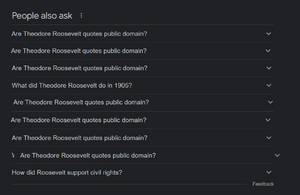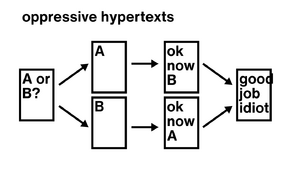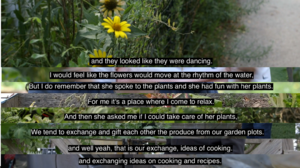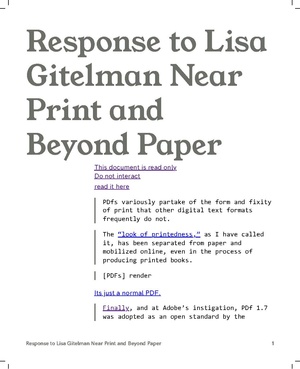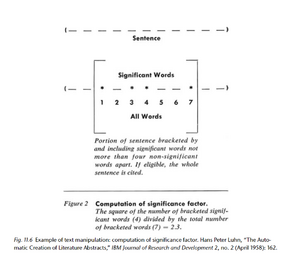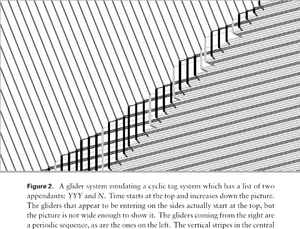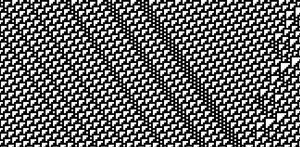User:Ssstephen/Reading
oh this one?
Scripts, Grooves and Writing Machines, Lisa Gitelman
Print culture and non print media evolve in mutual inextricability. The phonograph and contemporary inscriptive forms were deeply dependent upon reworkings of the social and economic relations of textuality, of print culture and print capitalism. They engaged literacy practices in toto, the cognitive and the somatic, the semiotic and the social. They helped question authors and readers as subjects and modify the experienced subjectivities of speakers, performers, publishers, and literates. In doing so they kept intervening into dynamic constructions of private and public, community and difference. p13
"Our copyright laws urgently need revision. They are imperfect in definition, confused and inconsistent in expression; they omit provision for many articles which, under modern reproductive processes, are entitled to protection; they impose hardships upon the copyright proprietor which are not essential to the fair protection of the public; they are difficult for the courts to interpret and impossible for the Copyright Office to administer with satisfaction to the public." [1]
Calligraphy for Computers, AV Hershey
User:Ssstephen/Reading/Calligraphy for Computers
The power of language in Jewish Kabbalah and magic: how to do and undo things with words, Agata Paluch
Literary Machines, Ted Nelson
(reading method note: read chapters 1 & 2 with no writing/notetaking, now re-scanning and writing these notes)
TN shows a diagram of "Ordinary" Hypertext which he proposes is a simplification of a (his) bigger more unifying idea. But surely there are more "Weird" Hypertexts? "Different" Hypertexts, "Strange" Hypertexts, "Outside" Hypertexts.
Check out Douglas Engelbart's NLS at Stanford Research Institute.
The reason that it (Project Xanadu) has taken so long is that all of its ultimate features are part of the design
Again this seems super prescriptive to me, not sure if I like that. No room for adaptation of structure, this is apparently the ultimate superstructure. ("unified structure to handle it all", "clean design", etc etc words that start warning signals for me)
TN seems to me to have some hidden/unaddressed desires to make this a corporate or commercial structure, in particular on page 0/6 where he compares Xanadu to Xerox Corporation (even the name dude), and page 0/13 where he offers new recruits "a small chance of fame and fortune".
THE BOOK STOPS HERE.
Ex TOT DAG: Expanding Tissue of Text, Data and Graphics (p. 0/9)
And publishing--ah consider what publishing will become
I like the optimistic rhetoric though and definitely exciting to read.
Check out The Problems of Hypertext (Chapter 3 of this book?)
This book too is hardly everybody's cup of tea[quote added], since there is not much choice among its sequences
p.1/14 Note: I added the link, it there a protocol for this? I have adapted the more traditional [emphasis added]
Hypertext referred to as "nonsequence". In my experience it is more a multitude of sequences, this is what I assumed the hyper- part meant. p.1/15
"Colored links" p.1/15: Interesting contrast to my interpretation of p.0/2 "Ordinary" Hypertext as part of a prescriptive system.
"Compound hypertext" p.1/16: In general the tone of this chapter sits with me better. I think TN is presenting the same ideas but without the intense rhetoric of the start.
Pictures and diagrams are intrinsically nonsequential
p.16 (mkay)
Talmud as hypertext p.1/16: a body of accumulated comment and controversy
Admitting hypertext is not from the future, I'm into this.
It is my belief that this new ability to represent ideas in the fullness of their interconnectedness will lead to easier and better writing, easier and better learning, and a far greater ability to share and communicate the interconnections among tomorrows ideas and problems
p.1/19. Again with the uber-optimistic futuristic rhetoric imo. I get this is still chapter one of the book but I see no space in his language for considering the potential issues of this new system. Where's my hoverboard?
Paper Machines, Markus Krajewski
P63 In Praise of the Cross-Reference
Index card system as authors assistant when cross referencing is used, or communication partner
Conscious and unconscious cross referencing
Clarifying creative prompts
Intentional (re conscious unconscious?) incorrect references can stimulate. Like Denis Diderot in Encyclopedia
Index cards as stars
Index cards as neurons
Index cards as stock prices
Index cards as sex in the city characters
Mapping
Scope/accuracy of a reference... Reference to mathematics vs reference to godels incompleteness theorem. Focus
“ Every note is only one element"
Claude Shannon Entropy
Nikolas Luhmann physical index cards in the late twentieth century (Anonymous . 1929c . “ Kartei ” als Warenzeichen gelöscht! Rationelle Betriebsführung, n.p.) ( Vogt , Victor . 1922 . Die Kartei: Ihre Anlage und Führung. Vol. 5 of Orga-Schriften. 2nd edition , revised by Dr. Porstmann. Berlin : Organisation Verlagsanstalt)
n.p.
-
P65 On the Gradual Manufacturing of Thoughts in Storage
poetological - to do with the knowledge of creation? Don't have a dictionary right now
Konrad Gessner possible inventor of index cards
"the production of innovations is always based on the fortifi ed recombination of the existing."
Heinrich von Kliest midwifery of thought (On the Gradual Produc-tion of Thoughts Whilst Speaking 1805) borrowed from Kant
analects --- what is this?
Conversation creates ideas
The Text claims index cards are a valid substitute for the new connections and perspectives offered by a human in conversation. To me this implies the humans creativity is the same as the connections offered by the references; surprising, useful, inspiring, but also predetermined?
Index cards as "precise" "infallible", generally true compared to humans but a) has limits and b) has negative results as well as positive
Kliest - knowledge as a "condition" or state rather than a property
Recombinatory power comes from material nature of cards shuffling juxtaposing etc
"born from the spirit of sloth" index cards as laziness
Index cards as boredom
Communicating with Slip Boxes: An Empirical Account, Niklas Luhmann
Thinking of the index cards as someone to be communicated with
"One of the most basic presuppositions of communication is that the partners can mutually surprise each other. "
Information can only be generated through comparison, OR (insert other logical operators here? Combination as information, XOR as information)
Different goals can lead to better mode informative communication
"The fixed filing place needs no system. It is sufficient that we give every slip a number which is easily seen and that we never change this number and thus the fixed place of the slip"
order is a system though, even chronology? Doesn't take relativity into account, implies some observer with a privileged frame of reference
This isn't just a hypothetical or theoretical limit, consider two authors editing the same wiki page
Multiverse library or multiverse wiki - if someone is already editing the page (or the entire wiki) and a second editor appears (or second observer), the new wiki "timeline" splinters from the last. (options in brackets would splinter much more frequently)
How does version history look in this system?
Could be experimented with a small simple system, maybe a single bit of content and two editors, with metadata for edit/version history
Secondary memory
Long term project, how to retain and enable access, preserve information, allow for expansion in future
Order should be purely formal, does this even makes sense? Can form be isolated?
"Every note is only an element which receives its quality only from the network of links and back-links within the system. " One billion Christians can't be wrong, one billion Muslims cant be wrong, one billion hyperlinks can't be wrong
Combination of order and disorder can (?) arise from formally ordered system
Examine supposedly formal orders, my instinct says they're not
Bookmarks
Bookmark sharing, bookmark searching, bookmark exchange, bookmark folders and structuring
Tags vs links, tags offer bidirectionality and multiple end points, links are just vectors while tags are fields
Accidents are the driving force for evolution
"to isolate these two aspects [ order and disorder] from each other is neither possible nor methodologically meaningful" <-- I like this
"tha accidents of reading"
What unread books can teach us, Oliver Burkeman
how to write a thesis don't have internet right now to find a readable version.
how-the-internet-makes-you-think-youre-smarter-than-you-really-are Another One to check out when I get internet connection
"Start with the title, Introduction and table of contents." Useful for reading and writing I think.
"the line wasn’t there" the blank web page, the imagined memory
Fugitive Libraries, Shannon Mattern
Melissa Adler, study of the politics of library classification
Joy Buolamwini, Timnit Gebru, and Safiya Noble
BlackLivesMatter Wikipedia Edit-a-Thon
Should a library be neutral? Neutrality justifies disengagement
Catherine Allen Latimer, Nella Larsen, Regina Anderson Andrews, and Pura Belpré
"Carrollton, Georgia, librarian Edith Foster marked the spines of African-Americans’ books with a triangle, so readers of all races would know which texts were meant for whom"
Patterson Toby Graham, in his history of the struggle to integrate Alabama’s libraries, asks questions that are still pertinent today: “What is the role of a library and a librarian in an intolerant and fearful society? Have librarians been active agents or just passive observers in the ebb and flow of social change and social conscience?”
I am a Strange Loop, Douglas Hofstadter
to varying degrees, we human beings live inside other human beings already, even in a totally nontechnological world. the interpenetration of souls is an inevitable consequence of the power of the representationally universal machines that our brains are. that is the true meaning of the word 'empathy'.
He's not great with words (penetration, universal machines, true) but moving past that this is a beautiful idea. The idea of a soul or identity as distributed and modular. The possibility to at very least simulate eachother. He mentions coarse and fine grained a lot which makes me think of renormalisation, and in a good way. A mathematical approach that doesnt require division to reach truth. Accepting that truth can be found on different scales at different times. The night of the 10th of November 1619.
the myth of watertight boundaries between souls is something whose falsity we all have slight tastes of all the time, but since it is so convenient and so conventional to associate one body with precisely one soul, since it is so deeply tempting and so deeply ingrained to see a body and a soul as being in perfect alignment, we choose to downplay or totally ignored the implications of the everyday manifestations of the [intercirclusion] of souls.
Volumetric Regimes, Possible Bodies
The So-called Lookalike
read it here A letter Manetta Barends wrote as the so-called designer of this book to a designer, such as the designer of the template used for the entire series, and made me think of a conversation we started to have in Methods yesterday about style.
The series editors insisted that we could take the design of the book into our own hands, as long as we would “follow the template”. They did not specify what this would mean exactly, but made clear that it was important for them that we honored the original design.
I am wondering how to reconnect your template and aesthetics to the way this book is being made?
We found a slab serif font that aligned with the one in your template and we figured out how to replicate the layout’s dynamics and overall structuration.
(emphasis added in all three above)
Aligned in what way, and why? As a fun misunderstanding Manetta then starts to talk about the "face on the cover" by which I thought she meant typeface. When she mentioned this slab-serif face I was already thinking about the implications of honouring the design choices in the template, and this made me think about the implications of using faces based on those from the early ninteenth century (in this book but also generally). If the face is aligned with the template, can it also be aligned with the contributors? Does everything have to be lined up? The spanish for 'line them up' is 'alinearlos' which is a useful term to know if you are trying to work with a designer whose communicates in spanish.
Yesterday (20221005) xpub1 were discussing style briefly while working together as a group. Myself and Bobi had attempted to not put our own formatting onto some texts we were comparing ('designing' and 'editing' respectively). But then when discussing the compared texts as a group, Cara immediately noticed them to be "very xpub". Brought up some thoughts about styles emerging from process and tools, individual and collective styles, and the implied next thought for me would be 'so what?', does it have any effect?
We Have Always Been GeoHackers
read it here Weird coincidence that I read this the day before learning to use the 3D printer. Although it first seemed like something not directly relevant some ties came up even in naming (gcode and gplates), but more interesting was looking at their process as a case study. 'Disobedient bug reporting and disobedient action research' seem like useful tools to me, and maybe are also interesting in relation to Manetta's letter above. I thought this was a good critique of a software environment and environment software.
body of the earth
This essay also references 'Yusoff, A Billion Black Anthropocenes or None' a few times which seems worth looking into.
From Work to Text[ to Sound], Roland Barthes
The title makes it clear already that text good work bad no work me text. When i first got a mobile phone it cost 9c to send a text. This steadily grew to 13c, although never cost as much as an MMS (up to 25c). Presumably the multi media message involved more work than the text, and hence the higher cost. Certainly an MMS usually involves the transfer of much more data than an SMS. Nasdaq defines information cost as
Transactions costs that include the assessment of the investment merits of a financial asset. Related: Search costs.
These days texts dont work in the same way as they used to, messaging has become over the top. An internet connection is required to go over the top, although a cellular network is not.
On B-dog's comparisons with music:
"to play" and "to listen" constituted a virtually undifferentiated activity
Barthes maybe saying that listening without playing is passive, spectating society? The text made me think of the word 'action' a lot, until Roro finally offers it in the cadence 'deferred action', the signifier as the beat that never drops. At sonic acts yesterday i found myself listening and also hearing. Trying hard not to see or read, which is difficult but Very Important Participation. Also attempting to keep silent, which is certainly easier but still a challenge (run through a forest with your hair tied in a braid without breaking a single branch). Sound good text bad because a sound is always part of an environment. You can't hear any thing except the mechanotransduction of your hair follicles, which your body is overcoding to stop you from overfalling and to give you spatial orientation. Sound is space or at very least they are signified in the same text.
Exploratory Programming, Nick Montford
1.7 Free Software and No-Cost Software
Free as in free beer, free speech, free love, free money, free palestine, freebird, free education, free ride, freefall, free willy, freesound.org, free facebook, free Tom Mooney, free your mind, free your mind arnhem, free music, free movies, free movies online, free movies watch now.
Further reading from this section: Free Texts Free Verse Free Software Free Software
America, Allen Ginsberg
America why are your libraries full of tears?
I’m addressing you. Are you going to let your emotional life be run by Time Magazine? I’m obsessed by Time Magazine. I read it every week. Its cover stares at me every time I slink past the corner candystore. I read it in the basement of the Berkeley Public Library. It’s always telling me about responsibility. Businessmen are serious. Movie producers are serious. Everybody’s serious but me.
Nuestra Herencia: Senior Legacy Project at El Paseo Community Garden, On the Real Film
.
..
...
....
.....
......
.......
An Invitation for Wildness, Happen Films
Non-action as a forest-gardener, sun tzu sort of thing
As a forest gardener one of the things that you do come to realise is that you're a bit-player, you're not the main driver out there, and that really your responsibility becomes learning more about how that works, stepping back, being a bit more relaxed about the whole thing and just watching those processes. And even changing the way that you think about harvest and about what you eat or what you need from your garden and so your diet could change as ours has, and rather than looking to eat lettuces we might each alexanders or a perrenial french sorrel.
The more intervention you make, the more mistakes you're likely to make
time-code for story about weed management
The opportunities that need people, its the opposite of industrialisation or intensification where you need hardly any people because machines are doing it, herbicides are doing it. Putting people back into an environment, help them to make it worthwhile and healthy
Writing Machines, N. Katherine Hayles
Material Metaphors p18
Research in Experimental Documents (RED) team at Xerox PARC, including Anne Balsamo and Richard Gold.
Where is this https://www.academia.edu/9759064/the_what_of_XFR_eXperiments_in_the_future_of_reading (found this one)
Where is this https://www.academia.edu/9759063/The_methods_of_our_madness_research_on_experimental_documents
It aint what you do it's the way that you do it
Technotexts p25
Further reading mentioned in this:
Dictionary of the Khazars: A Lexicon Novel, Milorad Pavic
Always Coming Home, Ursula LeGuin
High Tension, Paul Zimmerman
Cybertext: Perspectives on Ergodic Literature, Espen Aarseth
Cent Mille Milliards, Raymond Queneau
Afternoon, a story, Michael Joyce (where?)
Hypertext has at a minimum the three characteristics of MULTIPLE READING PATHS, CHUNKED TEXT, and some kind of LINKING MECHANISM
What about a text with only two of these characteristics, or just one? Multiple reading paths and chunked text, but no links? Chunked text and links, but only one reading path? Links without chunked text?
Reflexive Loops
N Kate includes the phrase reflexive loops
in her definition of technotexts which is v interesting. A text that creates a feedback loop by connecting the nodes of materiality and inscribed constructions (avoiding the words form and content? which is great if that's what she's doing) necessarily can achieve more than a text that doesn't. Feedback of information at the moment makes me think of emergent complexity, eg video feedback as described by Douglas Hofstadter in I Am A Strange Loop, example here and here. Or in the audio world, Karplus Strong synthesis or other techniques that use feedback to an extent that the initial inputs become irrelevant, the emergent sound (or video, or text) having its own properties. Also the recording surface of the body without organs. How can the process of recording and inscribing be creative and what is created or emerges from it? Why does a self-referencing iframe not infinitely loop and crash my machine?
The true difference in nature is not between the Symbolic and the Imaginary, but between the real machinic element, which constitutes desiring-production, and the structural whole of the Imaginary and the Symbolic, which merely forms a myth and its variants
Deleuze and Guattari, Anti-Oedipus p.102
The Future of Writing, Vilem Flusser
image
space
linear
the grass
text
[https://www.gutenberg.org/files/1998/1998-h/1998-h.htm#link2H_4_0087 eternal return]
sound
[[#eternalreturn |eternal return]]
‘Well! Once more!’
music
‘Was THAT—life?’ will I say unto death.
[[#eternalreturn |eternal return]]
As We May Think, Vannevar Bush
(from the Life magazine reproduction, September 1945)
- Image: The scientist recording an experiment with a "universal-focus lens" in 1945 was presumably an optimistic or hopeful one, and the title and subtitle seem to follow along with this but for me the idea of "universal-focus" is terrifying and presumably for many people today at least unrealistic. A jpeg (which this article probably isnt, but most likely uses a similar compression format) does not have a universal focus but rather makes compromises (thinking or cognition?) on how much to represent, the resolution and also the frequency of information to represent. Like the human eye it was designed for, the compression algorhythm ignores high frequency data. Alias, the "universal-focus lens" seems to me an unrealistic and unwanted dream.
Witness the humble typewriter, or the movie camera, or the automobile.
Who should witness them? What is witnessing? When you witness a document you write your name on it. "Witness" comes from wit as in knowledge.
Electrical contacts have ceased to stick when thoroughly understood.
Does understanding (observing) affect the world? Is reading a form of writing?
- Image: A scientist smoking a pipe and holding a large cylindrical flask half full of liquid. They are looking into the flask and attempting to keep a serious face while trying desperately to remember if it is the top or the bottom of the meniscus that should be read. The pipe greatly assists in this attempt as it forces the scientist to keep their lips tightly pursed. This image shows, much more clearly that the previous one, the artefacts of fourier space compression; a splash of high frequency here, a dab of low frequency there, the algorithm's fingerprints poured into its work.
Under [Vannevar Bush's] direction 6,000 scientists worked on such projects as the development of radar and the atomic bomb.
Between the original publishing of this article in the Atlantic July 1945 and this version in September 1945 there was one month which was called August 1945 and it had thirty one days including the 6th of August 1945 and the 9th of August 1945. From here Im finished with the opinions of this Little Boy, but I kept reading the images.
- Images: Ex-lax is presented as the goldilocks zone laxative through three images and accompanying text, not like those "fright!" strong laxatives or "sissy" weak laxatives. Just stay centrist and no-one will get spanked!
- Image: The "supersecretary of the coming age" has a big smiley head on it. The line drawing style of the illustration reminds me of operating manuals and assembly instructions. The supersecretary is a tool (hence the big smiley head).
- Image: The Mifflin ad is quite frightening. Perhaps this isnt from the original, but this compressed version of the image looks like the woman has a very intense stare. Maybe this is in relation to the poem she recites to herself (to me?) and her intense body rubbing which seems to contradict the slogan "Rub and relax with Mifflin".
- Image: An eagle in a circle.
- Image: A right foot with three corns.
- Image: Coins I thought but then I read they are awards for watchcraft.
- Image: Sir Walter Raleigh.
- Image: Automobile User's Guide.
- Image: Mechanical pencil.
- Image: Server room with controller which has pressure gauges and VU meters.
- Image: A boy cycles away from his dad, both wave.
- Image: A magazine with a picture of a girl on a bike (the boy's bike?)
- Image: A bag of Richardson's After Dinner Mints.
- Image: Ceci c'est un pipe.
- Image: A girl drinking orange juice, and a bottle of orange juice.
- Image: A tube of paste called Glider.
- Image: A woman smoking indoors.
- Image: A person in their underwear.
- Image: Fudge.
- Image: Robinson Reminders, a pocket memory system (to be used with the mechanical pen?).
- Image: A dog wrappen in a suspender.edit: no a sock garter.
- Image: A shoe that transforms soldiers into businessmen.
- Image: A board game that appears to be a combination of scrabble and pictionary.
- Image: Cute puppies.
- Image: Another woman smoking (location not specified visually).
Near Print and Beyond Paper: Knowing by *.pdf, Lisa Gitelman
PDfs variously partake of the form and fixity of print that other digital text formats frequently do not.
The “look of printedness,” as I have called it, has been separated from paper and mobilized online, even in the process of producing printed books.
[PDFs] render
Its just a normal PDF.
Finally, and at Adobe’s instigation, PDf 1.7 was adopted as an open standard by the International Standards Organization in 2008
This would be interesting to study further as an event, what is the context, who were the actors, what were their motivations.
The fixity of print
the New York Times Information Bank—another fascinating, short-lived experiment—tried the same kind of thing, but fiche retrieval proved so unreliable that eventually “a person wearing white gloves pulled fiche on demand” and positioned it in front of a video camera.
Tabs opened while reading
WYSIWYG WYS>WYG WYS<WYG WYS%WYG WYS&WYG WYS|WYG
folding, smelling, tearing, crumpling, shuffling, and wiping
PDfs are indi-vidually bounded and distinct.
Can a PDF be in itself?
<iframe src="https://pzwiki.wdka.nl/mw-mediadesign/images/9/9b/Response_to_Lisa_Gitelman_Near_Print_and_Beyond_Paper.pdf" />
If it is a common-place today that words and images and sounds are closer together than they have ever been before—now that all of them come as data strings, in bits and bytes—nonetheless there are important ways that “as compu-tational data structures, images differ radically and fundamentally from electronic text.”85 The big difference, as Kirschenbaum explains, is that unlike digital text, “images remain largely opaque to the algorithmic eyes of the machine.”
9 Not quite text (from a reader’s standpoint) and not entirely image (at the scanner), barcodes like these require a fixity that makes them perfect content for PDfs as well as for paper. So the document persists.
What is the difference between "Portable Document Format Reference Manual" by Adobe Systems and "Beyond Paper: The Official Guide to Adobe Acrobat" by Patrick Ames?
More tabs
An Archive of Words, Daniel Rosenberg
This reminds me of Vuk Cosic's File Extinguisher (which seems to be most easily accessed through the Internet Archive's Wayback Machine ironically). The File Extinguisher used to also have a map which unfortunately doesn't seem to be archived. The map as an archive is an interesting document as it primarily locates things in relation to eachother. Where do you put something in the archive, what is beside it, what is it far away from?
It will be the foundation for the history of the epistemol-ogy of our contemporary era.
How does "the epistimology of our contemporary era" have a history? I can only understand this as part of a more general history of epistemology, maybe I'm missing the point.
Thomas Aquinas in Roberto Busa Mallet topic modeling software, can this be used to make a Zipfian distribution? Try on John Dee's Liber Loagaeth for example or some of Hildegard's Lingua Ignota
a feeling of and, a feeling of if, a feeling of but, and a feeling of by
the a the a the the the the a the the a a the a a the the a a the a the a a a the the a a the the the the a a a a a the a the a the the a the the the the the a a the a a a a a the a a a the a a the the the a a the a a a the the a a a a a a a the a the a the the the a a a the a a the a a the a a the a a a a a a a a a the a the a a the a a the the the a a a a a a a a the the the a a a the a the a the a the the a a the a a a a the a a a a a a a a the a the a a the a the the the the the a a the a the a a the the a a a a a the the a a the a the the the the the the the a the a a the a a a the the a a a the a the a the the the a a the the the a the a a the a the a a the the the a a the a the a a a a a a a the a a a the the a the a the a the the a a the a a the a the a the the the the a a the the the a the a a a a a a the a the a a a a the a the the the the a the a the a the a the a the a the a the a the a the a the a the a the the the the the a a a the a the a the a the the the a the a a the a the a the the the a the a a the a the the the a a a the the the the a a a a the the the the a the a a a a a a the the a a a a a the the the the a a the a the a the the
the Microfiche Concordance to Old English: The High- Frequency Words.11 This marks a no-table development in the history of computer- generated concordances
No-table lol.
Ability of Google Search et al to understand or interpret natural language is super interesting. A search algorithm doesn't have the same logic of interpretation as a human, it finds meaning in other places and finds other meanings. Presumably corporate aims are to make this logic emulate human meaninging as much as possible to make it an efficient tool, but it's interesting to think about the alternative knowledge a meaning-making machine could find.
Concordance of indeclinables, John of Segovia
It was a forest of words
Strongs Concordance and other concordances of the Bible are aggregated here. A concordance is an external text which creates links within it's target text. This site as an aggregated concordance then creates links between the entries of different concordances, referring to the same target text.
Further reading
Paul Tasman, “Literary Data Processing,” IBM Journal of Research and Development 1, no. 3 1957
Franco Moretti, Distant Reading;
Steven Best and Sharon Marcus, “Surface Reading: An Introduction,” Representations 108, no. 1 (November 1, 2009): 1– 21;
Heather Love, “Close but Not Deep: Literary Ethics and the Descriptive Turn,” New Literary History 41, no. 2 (Spring 2010): 371– 91;
New Ways of Reading
Lev Manovich, “The Database as Symbolic Form,” Convergence5, no. 2 (June 1999): 80– 99;
Geoffrey C. Bowker, Memory Practices in the Sciences (Cam-bridge, MA: MIT Press, 2005)
An Universal History from the Earliest Account of Time to the Present
Barbara Flood, Historical note: The start of a stop list at biological abstracts
Biological Abstracts’ Subject in Context (BASIC) 1961 BASIC (Beginners' All-purpose Symbolic Instruction Code) 1964
The Internet may feel like a universal archive. In fact, it is more like a textual archipelago.
Universality in Elementary Cellular Automata, Matthew Cook
Because a system is universal, some of its properties are undecidable (will it become periodic, will a particular sequence occur)
Because Turing machines are universal, if a compiler exists that can compile any data and program from a turing machine to another computer, then that computer is also universal
Tag systems are universal ACDABBE --> DABBECCDD
Cyclic tag systems can only have a two letter alphabet {Y,N}, but they can emulate tag systems so are also universal.
A glider system (see image) is a system of moving particles called gliders. In the image you can see diagonal lines which interact with vertical lines (the tape head or data) in the centre, emulating a cyclic tag system. The glider system is running an emulation of the cyclic tag system, which is running an emulation of the tag system. In a way this looks like a vector system to me, of interacting vectors rather than flipping bits.
Lastly you run an emulation of the glider system inside rule 110.
-
Fabric version of this could be really interesting. If you got a round loom with 14n pins (a flat loom maybe would be more flexible, to decide different sizes), you could knit a hat or sock program. https://www.youtube.com/watch?v=gOTIAmg0Iow Or does it need to be woven? No idea.
The piece should be a ring so the ends more obviously loop back on themselves. Re: slow computing, computation as labour, This Work of Body / This Body of Work, Meghan Clarke https://www.designacademy.nl/p/study-at-dae/graduation-show/graduation-projects/meghan-clarke Talk to Daniela about double sided knitting, re binary knitting and ternary knitting. So the knitting is the computation; knit the first line of the program then knit further to get the output. A little similar to a quipu, although probably a less efficient system. Are quipus universal?
What can you compute on rule 110 (apart from everything)? Can you write a hello world script on a rule 110 computer? Can you add 2+2? https://www.youtube.com/watch?v=QKnSRw_X2w4
First attempts here at coding in the p5.js version of 110 with a few A gliders of increasing widths. Even experimenting on the javascript version of this is so slow, doing this in playing cards or knitting would be incredibly slow. But if it's a statement about computational labour the slowness reveals that.
Stopped at page 13 for now.

